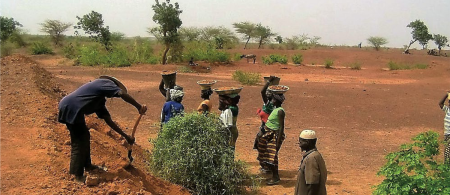I am passionate about water issues and where they intersect with human lives. I've strong skills in communication, networking and advocacy.
Improving water sources and use in urban agriculture in Beijing
Beijing is facing a shortage of water. Because of a downward trend in rainfall, surface water is gradually drying up and the level of groundwater is declining. This decline in availability of water is affecting urban agriculture in the city. Innovations are being sought by both the government and farmers focusing on the use of new water sources, like reuse of wastewater and rainwater harvesting, and improved water management.
Improving Decision-making on Interventions in the Urban Water System of Accra
Management of water in an urban context has an important effect on the general health status of the city’s population. Accra is one of these cities where the urban water system is far from optimal, and therefore a number of projects are underway to improve the situation. In the current situation, only a part of the expanding city has reliable access to drinking water.
Integrated water and drylands management
Jordan is predominantly covered by drylands, with 80% of the country receiving an annual precipitation of about 100mm or less. Climate change, mismanagement and inherent water scarcity are the main drivers for IWRM projects in Jordan to promote water use efficiency, improve water governance, and minimize water losses.
Building River Dialogue and Governance
The BRIDGE project has been working in three transboundary basins in Mesoamerica in the heart of the Central American Dry Corridor to promote cooperation and build capacities on water governance of stakeholders at the local, national and transboundary levels.
Improving groundwater recharge in the drylands
Balochistan is the largest province of Pakistan and is classified as hyper-arid to arid dryland. In the absence of perennial water sources the population has come to rely on groundwater. Efforts to recharge the underground aquifers have been practiced through construction of Delay Action Dams.
Ecosystems Protecting Infrastructure and Communities in Burkina Faso
Burkina Faso’s Sahelian climate is extreme and highly variable and is characterized by a short rainy season from June to October and a long dry season from November to May. Prone to strong spatio-temporal variability and irregular rainfall patterns, deviations in rainfall and the duration of the rainy season of more than 30% have been observed.







